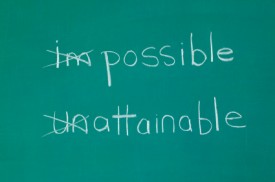
In one of my favorite Scientific Learning webinars, "Our Changing Education Landscape", Dr. Bill (Willard) Daggett outlines a proven, step-by-step blueprint for successful change in the rapidly evolving education landscape. Dr. Daggett shares the results of a studyconducted jointly by the organization he leads—the International Center for Leadership in Education—which locates and evaluates the most rapidly improving elementary, middle, and high schools in the United States—and the Council of Chief State School Officers.
The findings were encouraging and inspiring: Dr. Daggett asserts that contrary to popular opinion, schools are actually improving, especially those that are adjusting well to the deeper needs and transitioning priorities of 21st century education. In the webinar, Daggett presents the three stages ( Why, Whatand How) these schools go through when undertaking their evolution into successful 21st century schools.
WHY
Educators at the nation's most rapidly improving schools first come to the realization that they have the power to change things. They actively decide to take responsibility for problems in the education system and identify themselves as the solution. Once that breakthrough is made, they begin to foster a culture to support change...and success follows. Coupled with other, practical motivations (e.g., the accelerated pace of technological developments, globalization, etc.), this shift in perspective gives school leaders plenty of incentive ( WHY) to make the necessary changes to survive and thrive in the changing education landscape.
WHAT
Schools that are rapidly improving have taken the time to identify exactly WHATit is they need to change, and then decisively put into place innovative methods to make those changes. This requires a frank look at current and often antiquated models of teaching and evaluation, as well as the development of forward-looking models, which focus on interdisciplinary collaboration, significant real world application, and an embrace of technology(by both students and teachers).
HOW
Daggett suggests a three-year transition plan for schools considering HOWto re-imagine themselves in the changing landscape. It takes time to make the full transition to the Common Core State Standards, and to switch from old to new paradigms that focus on rigorous academic standards. Daggett also touches on the need for educators at all levels and in all subjects to prioritize reading proficiency, and uses the Lexile Framework (a system for measuring reading skills) to illuminate relevant statistics on how schools fall short.
About the presenter: Willard R. Daggett, Ed.D., CEO of the International Center for Leadership in Education, is recognized worldwide for his proven ability to move preK-12 education systems towards more rigorous and relevant skills and knowledge for all students. He has assisted a number of states and hundreds of school districts with their school improvement initiatives. He serves on several advisory boards, including the NASA Education Advisory Board and USA Today's Education Advisory Board.
Related Reading:
Blended Learning Implementation Strategies for the K-12 Classroom
The Role of the Teacher in Blended Learning: Data, Management, and Student Support

